Mr. Rüsges, as Head of Pre-assembly, you helped plan and set up the new process in Tuttlingen. Wouldn't series production also have been possible in Isérables at CHIRON Swiss?
It might have been possible, yes. Nevertheless: Isérables is a Manufactory, which places a natural limit on the number of units that can be produced. Our colleagues there have constructed between 12 and 15 machining centers per year. When you take into account that this includes customer-specific applications, it's a very respectable number. For quantities of 100 or more machines per year, however, the lead times have to be different and more space and structures are required for series production. Here in Tuttlingen, the relevant divisions – purchasing, logistics, workplace design and application – are established and appropriately dimensioned and we have direct access to them.
How is the new range structured and how quickly is a Micro5 ready for operation?
In contrast to the other series of the CHIRON Group, the entire value-added process here is covered in area of just 400 square meters – made possible by the highly compact dimensions of the Micro5. The aim is to achieve an 18-day turnaround from the moment of entry into the system, from the initial joining through to the final acceptance of the basic machine. In the preassembly stage, there are multiple stations at which main assemblies such as the C-axis, Z-axis and machining unit are pre-assembled, as well as secondary assemblies such as chip containers and tool systems. Three days of pre-assembly are followed by nine days of final assembly. For this stage, there are currently three identical stations that process the »input« from the pre-assembly stage. Each of them also has an additional station for commissioning and final acceptance. With a lead time of 18 days, requirements can be serviced much faster than before. Furthermore, the possible options for the Micro5 are significantly limited compared to our other machining centers, simply because of the much more compact working area. The design also means that customer-specific applications – clamping devices, auxiliary equipment, fixtures – can be implemented with a shorter lead time. If, for example, a customer orders 20 Micro5 units rather than two, we want to be able to meet this demand simply and easily with our current capabilities.
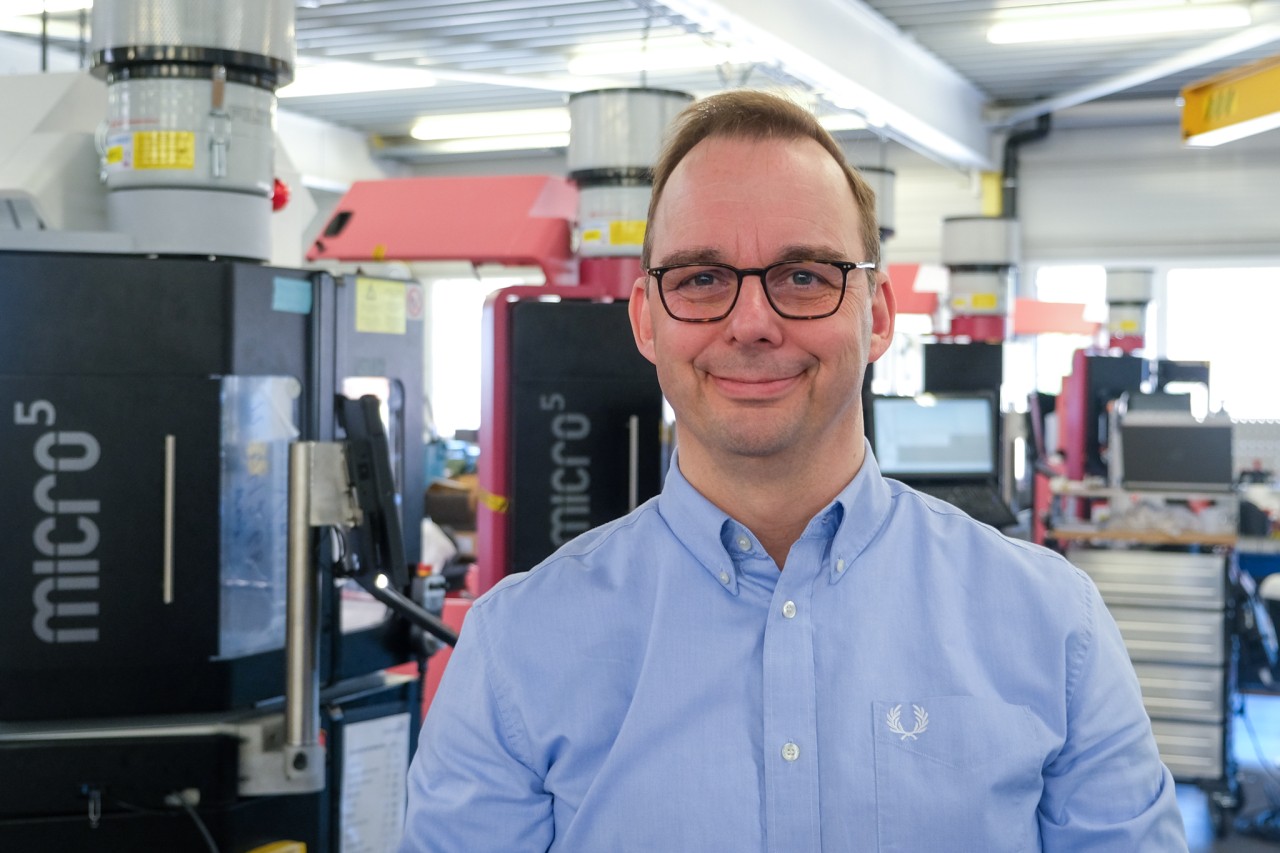
Stefan Rüsges, Head of Pre-assembly, is visibly satisfied with the successful start of the Micro5 assembly in Tuttlingen, Germany.
The new department comprises 32 people. Were additional qualifications required for these posts?
In principle, no. Whether they're new hires or transfers from other departments, all the employees are experienced professionals. With the Micro5, however, everything is more than just one size smaller: The largest module only takes up half a desk. A trained surgical mechanic with a steady hand is therefore required to put together assemblies with particularly small components.
»I asked interested employees in advance: Are you confident that you can cook a three-course meal using only your oven? Without a countertop or any of the other utensils in your kitchen? If you don't burn your fingers doing it, you've come to the right place!«
So it sounds like the transfer from Switzerland to Tuttlingen, Germany – i.e. from a manufactory to an industrial standard – was an easy affair?
Well, for one thing, the move toward investment in series production of the Micro5 in Tuttlingen – a decision that was made in the middle of last year – was preceded by an intensive analysis and planning phase. Key tasks included establishing supply chains, training employees and setting up the assembly line. In addition, the machining center had already been built and we obtained a very well predeveloped machine from Switzerland. Nevertheless, there was still some work to be done to transfer this high level of basic quality into an industrial standard. First, the fundamentals: We transferred all the engineering plans to our SAP system and refined them accordingly. For example, we designed the control cabinet so that it can be built according to the systems we use here. Safety standards and general and industry-specific certifications are also important considerations. In addition, it was necessary to integrate certain functionalities that our customers know and expect from a machining center from the CHIRON Group into a working area that was »tiny« by our standards. One of example of this is the laser-based axle alignment. Here, with R&D, we have modified the system from the 08 Series accordingly for the smaller working area and remain strongly engaged with development in other aspects.
Insight into the new assembly line
What machine-side optimizations does the first generation of the Micro5 produced in Tuttlingen have to offer?
We are essentially oriented toward the high requirements of the medical and precision technology sectors, where the Micro5 is already employed successfully. As for the current generation: We have modified some features based on our industrial experience and taken the machining center to the next level in collaboration with our colleagues in Switzerland. The magazine now holds up to 60 tools and up to six different clamping devices can be stored. In addition, we have optimized the C-axis and made use of a more powerful spindle. Optionally, oil machining is now also possible with the Micro5. With this and thanks to the optimized chip management, stainless steels and titanium can also be machined economically. There's another benefit, as well: We got directly started on a very demanding project for watch cases in the high-end luxury segment without a pre-run machine. It was something of a challenge! But we were able to convincingly implement the very high specifications with regard to surface quality and all customers now benefit from this. Of course, we have to ensure that we maintain a happy medium between having too many standard features and too few. Here, we create a basic machine at a high level, with basic geometry and basic machine acceptance. We put these »on the shelf«, so to speak and other departments such as the application division then take the machines »off the shelf« and refine them according to customer specifications.
»The Micro5 is intended for small workpieces and fast machining. It's present not just in our traditional user industries, but in many others, as well. In this regard, the little Micro5 is a ›cosmopolitan machine‹ with great potential.«
As of last year, it is now possible to automate the Micro5 with the Feed5 handling system. How has Feed5 been received by the market?
At the start of the assembly line, we assumed that around a quarter of the machining centers would be equipped with automation. This figure is now at 50 percent, so the productive combination of up to two Micro5 units with Feed5 is exactly what the market needs. A production island of this kind not only requires little energy, but also very little space – and space is always in scarce supply in production areas.
Currently, the Micro5 is predominantly employed by users in the jewelry and watchmaking, precision and medical technology sectors. In which markets and for which applications do you see further potential?
In a word: Everywhere! More specifically: The Micro5 is intended for small workpieces and fast machining. It's present not just in our traditional user industries, but in many others, as well. In this regard, the little Micro5 is a »cosmopolitan machine« with great potential. Customers come to the CHIRON Group with very different machining requirements. The year is already well filled with testcuts: Currently, we are actively working on 50 projects and have over 100 project requests.
Can you give us an example of a new application using the Micro5? Or, to look at it another way: When does it make more sense to use a larger machining center from the CHIRON Group?
One CHIRON Group customer in the USA manufactures very large, heavy parts on our large series. In the course of an appointment, the Micro5 was also presented – simply to showcase the full range of the portfolio. The customer left the room briefly, returned with a cube-sized workpiece and asked if the Micro5 wasn't precisely the right kind of machine for this type of part size and machining. This just goes to show: Many things are possible and we're definitely excited by it! Surface finishing of the highest quality is always possible, as is the production of delicate parts with high precision. However, if complete holes need to be drilled through the workpiece, for example, the working area of the Micro5 simply does not allow for this tool path. With the 08 Series, we cover a much wider range in this respect. The machining concept of the Micro5 is deliberately different, also in terms of how the forces are mapped. For example, if you place four Micro5 units on a surface instead of one machine of the 08 Series, this can be advantageous. The decisive factor, as with any machine selection, is that it is suitable for the component and the machining.
One last question: After seven months of assembling the Micro5 and Feed5, what would be your initial summary of how things have turned out?
Well, the fact that we have so much to do here on the new assembly line and that the application is also increasingly in demand shows that the Micro5 has plenty of potential. And series production here in Tuttlingen, Germany really did start at just the right time.
Step by step: The assembly stations up to the finished Micro5

Pre-assembly: C axis station
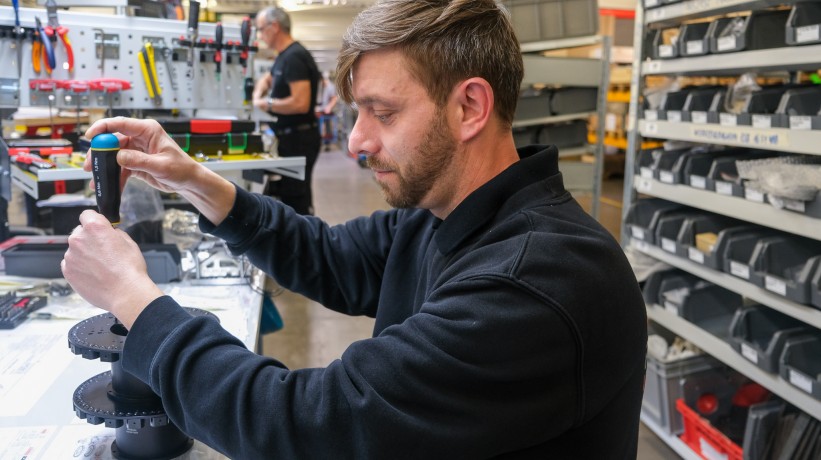
Pre-assembly: Tool magazine

Pre-assembly: Y-axis station
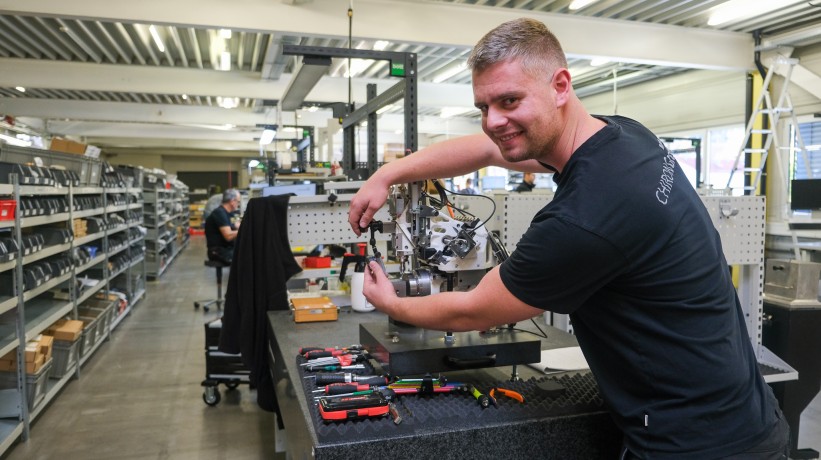
Pre-assembly: Machining unit
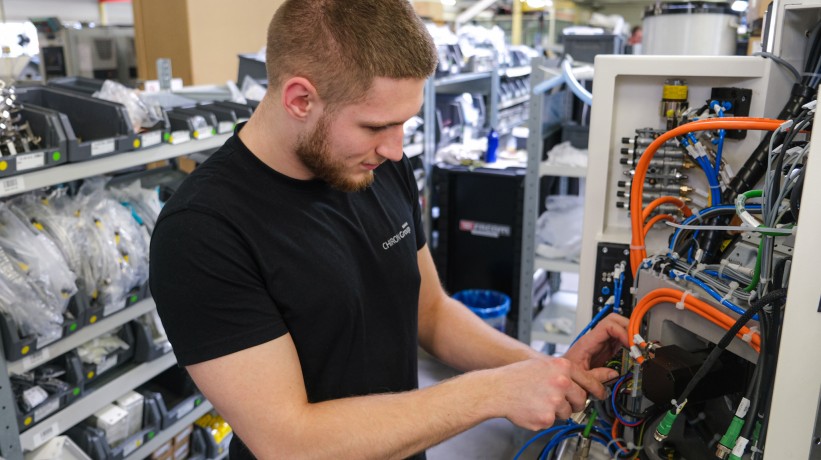
Final assembly
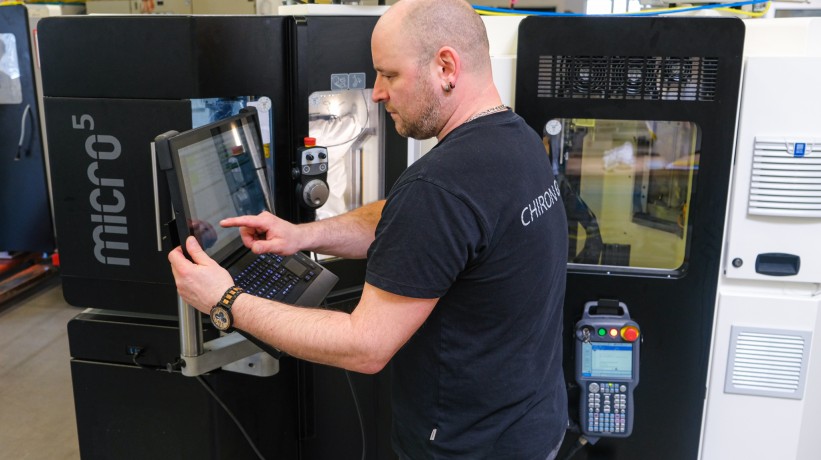
Start-up and final acceptance






